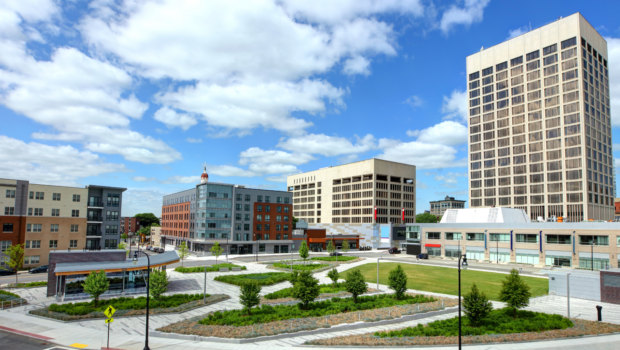The Facts on Inclusionary Zoning
By David Sullivan, Director of Economic Development & Business Recruitment
WORCESTER – Massachusetts is experiencing a severe shortage of housing due to a lack of construction, with an estimated 108,000 housing units needed to meet the demand of the state’s growing population. Worcester is no exception to this shortage, and as a result, housing prices have shot up.
Worcester grew by 25,000 residents between 2010 and 2020, exceeding even the most generous population growth estimates. The Chamber’s housing study, conducted in 2019 by a consultant who is now the chief economist for the state government, predicted that the city would reach 200,000 residents by 2030. Instead, Worcester reached that mark the very next year.
Only 10,000 units of housing were constructed to house those 25,000 new residents in the past decade. Now, out of all the 75 most populous metro areas in the United States, the Worcester metro area ranks as the 8th worst in terms of available housing.
Inclusionary Zoning Explained
Inclusionary Zoning (IZ) presents an opportunity for the city to gradually add to the affordable housing stock over time to play a part in addressing affordability issues. IZ is a zoning ordinance that is used by municipalities to require new multifamily developments to incorporate a small percentage of affordable housing in each project, or to at least pay a fee to a town’s affordable housing trust fund so that other developers can access local subsidies to build income-reserved units.
Examples in other communities prove that the most successful IZ ordinances provide flexibility and incentives for the developers in meeting those requirements. Without them, developers become dissuaded from investing in the community, and desperately needed housing production could stall.
Even if a developer wants to build in Worcester, the lenders and equity investors that finance their developments require a certain level of profit. On top of inclusionary zoning, construction materials have seen the largest price increase in decades, interest rates have increased by the highest amount in 30 years, and Worcester already has the 8th highest commercial tax rate in Massachusetts. These other factors play into inclusionary zoning.
As the Massachusetts Housing Partnership puts it, when inclusionary zoning is done right, it combines both “carrots” and “sticks” and is cognizant of other factors in development so that a community can still produce the housing it needs.
City’s Proposed Policy
The city’s Executive Office of Economic Development has filed a draft ordinance, which is now undergoing a series of public hearings. The proposal is the result of input and expert advice from other municipalities with IZ ordinances, the Massachusetts Housing Partnership, land use attorneys, developers, community activists, and subject matter experts. Its stated goal is to create affordable housing opportunities while not creating a barrier to housing production.
“Two themes that came up frequently in our conversations with subject matter experts was to start with a policy that included options for developers, as well as avoiding a policy that was too convoluted and complex,” wrote Acting City Manager Eric Batista in the memo to City Council proposing the ordinance.
The proposed ordinance has several components, based on best practices from other communities. The ordinance would only trigger for developments that have 12 or more units, and the affordable units must be income reserved for at least 30 years and be comparable in size and quality to the market-rate units. If developers do not have the expertise necessary to manage affordable housing tenant applications and apply for complex government tax credits, they can opt to instead pay a fee to the city’s affordable housing trust fund which will in turn go to support other affordable housing developments.
This measure is referred to as “payment-in-lieu” and is an essential component of IZ ordinances. The city is proposing that the fee be 3% of the total construction value of the project. This will effectively create a revenue stream for the city’s brand-new affordable housing trust fund, which was given an initial injection of $15 million of federal American Rescue Plan Act funds. However, due to federal regulations, this money must be committed to projects by 2024, making the payment-in-lieu a critical piece of Worcester’s potential IZ policy in the future.
Including Options for 60% and 80% AMI
An important point of discussion has been the area median income (AMI) level that the units must be reserved for. The city’s ordinance proposes the requirement be, “at least 15% of the units restricted to households at or below 80% AMI, or 10% of the units restricted to households at or below 60% of the AMI, or a combination thereof.”
Some who have spoken at public meetings expressed concern that developers would not build 60% AMI units if they could construct 80% AMI units instead. The city’s ordinance, though, accounts for this cost disparity. The maximum price of any income reserved unit cannot exceed one of two numbers – either the combined rent and utility that is 30% of the household’s income, or the “fair market rent” as determined by the federal government.
This essentially means that developers can construct a mixture of 60% and 80% AMI units at the same exact cost as building all 80% AMI units for their inclusionary zoning requirement.
When It Might Take Effect
The next step for inclusionary zoning is a special public hearing at the Planning Board on November 9, followed by a public hearing at City Council and another at the Economic Development Subcommittee. Finally, a two-thirds vote by the full council will be needed to approve. This final step is likely to happen sometime in early 2023, after which all projects receiving a Planning Board permit will need to comply.
Inclusionary zoning is needed, but it will only work in conjunction with other mechanisms, such as the new affordable housing trust fund, and it will only create a meaningful difference in the quality and affordability of Worcester’s housing if it does not present yet another barrier to construction.





